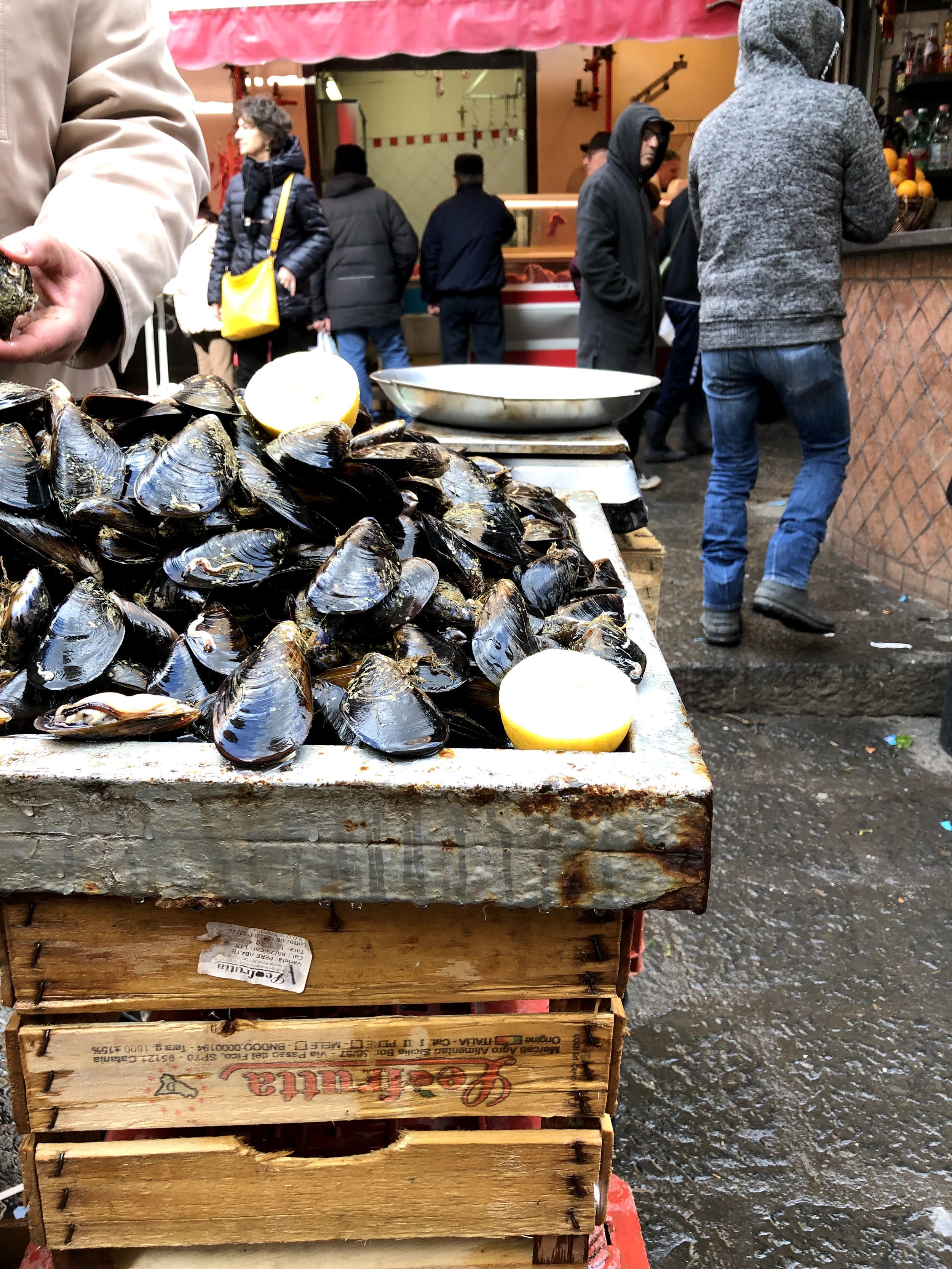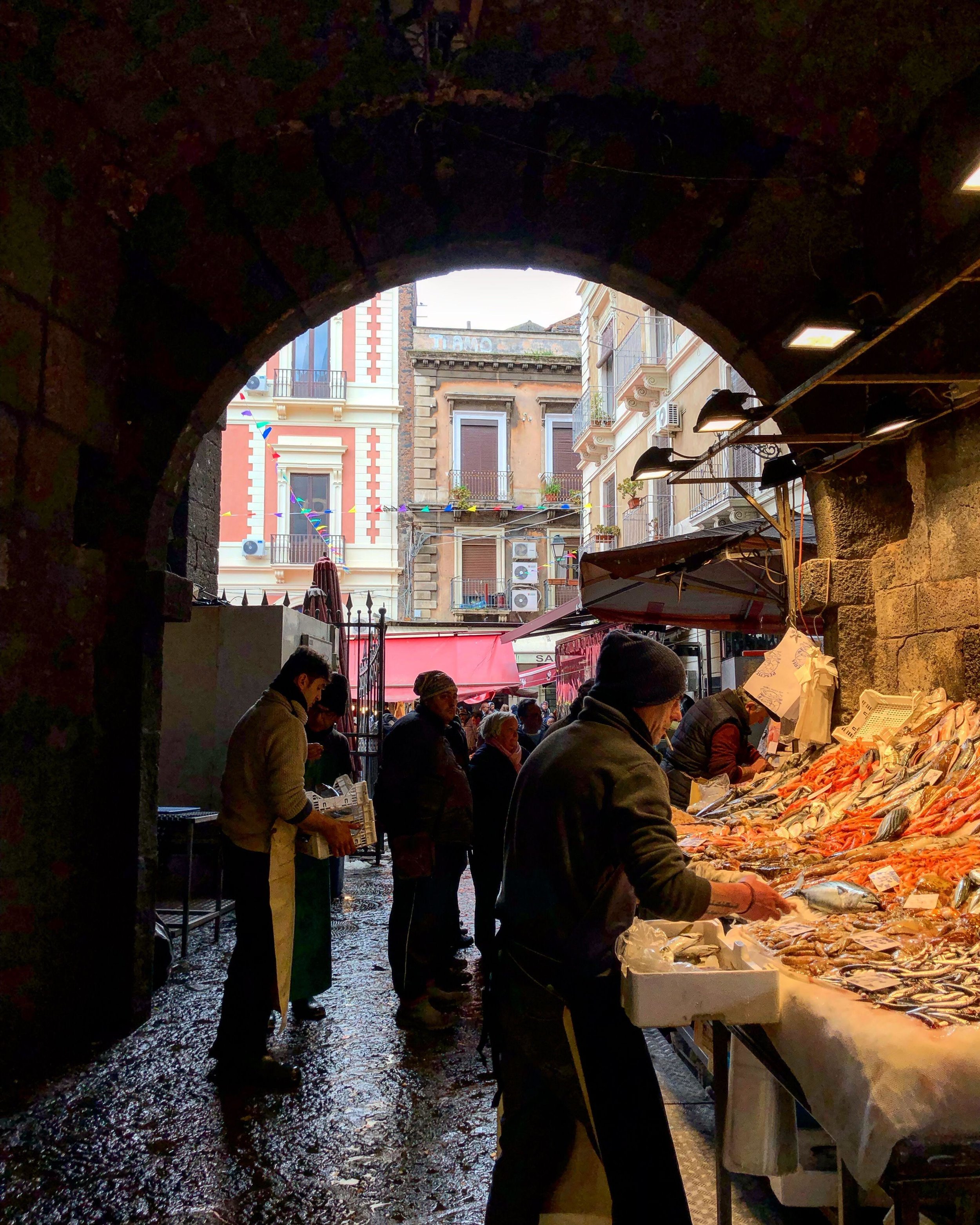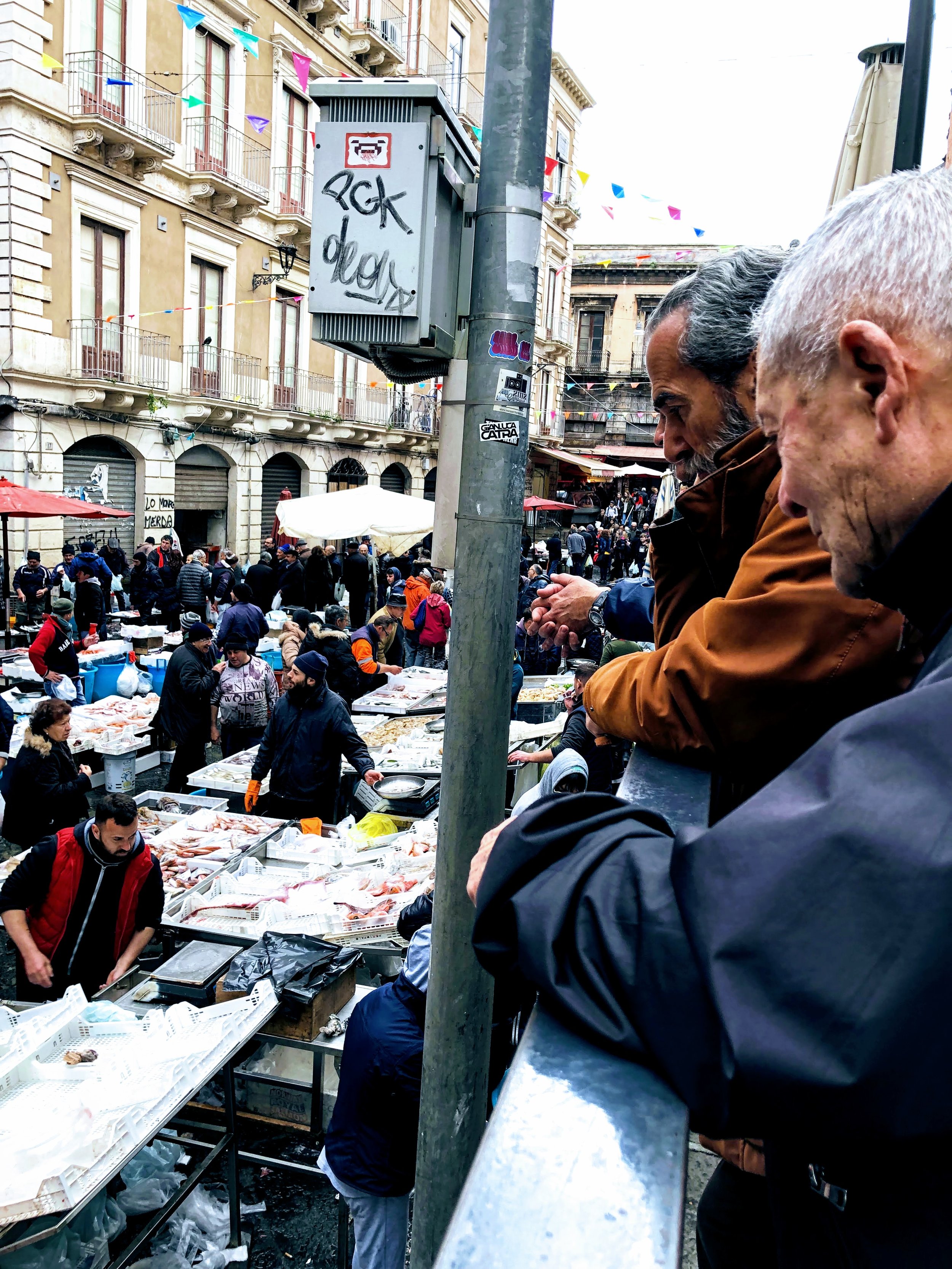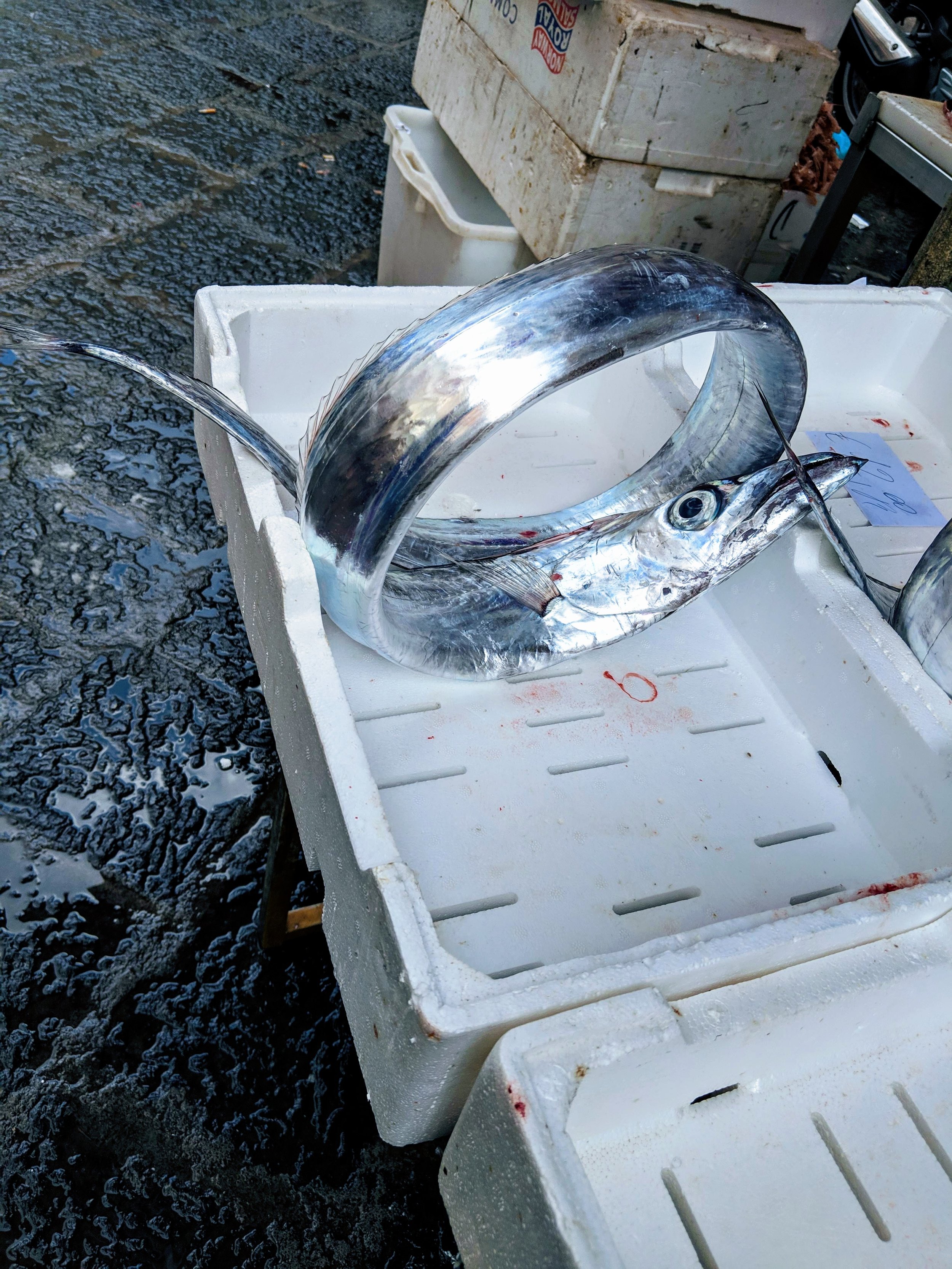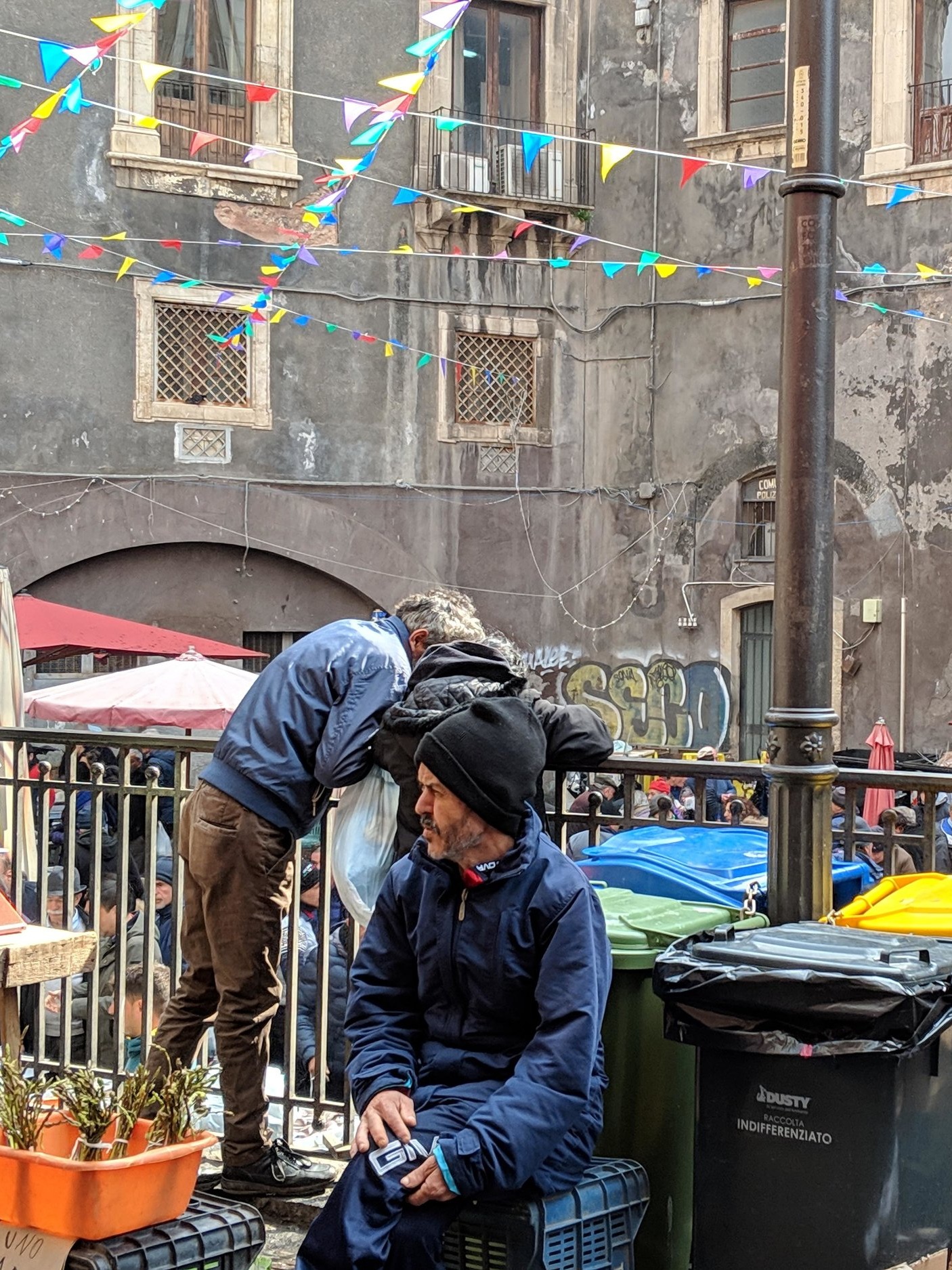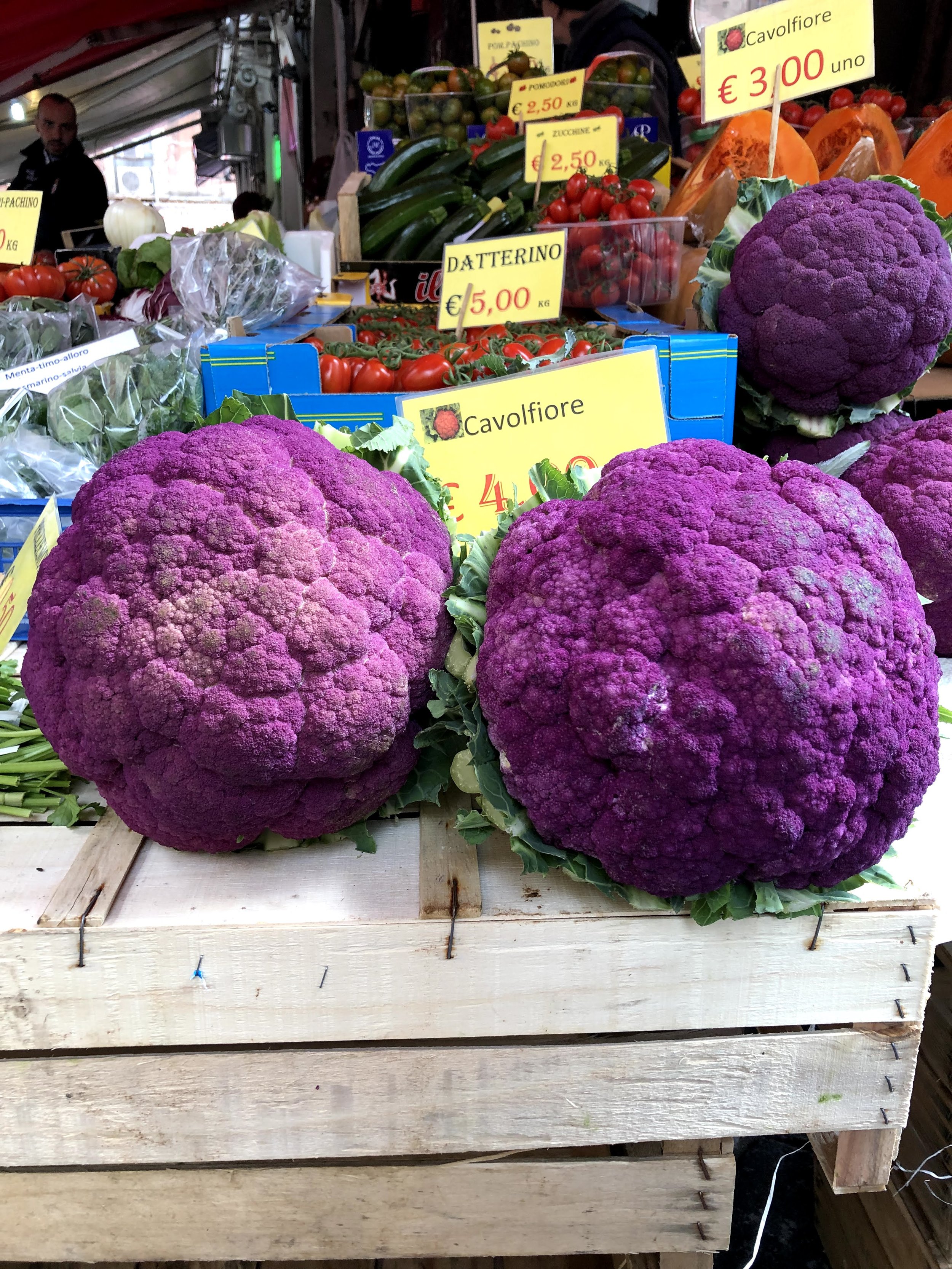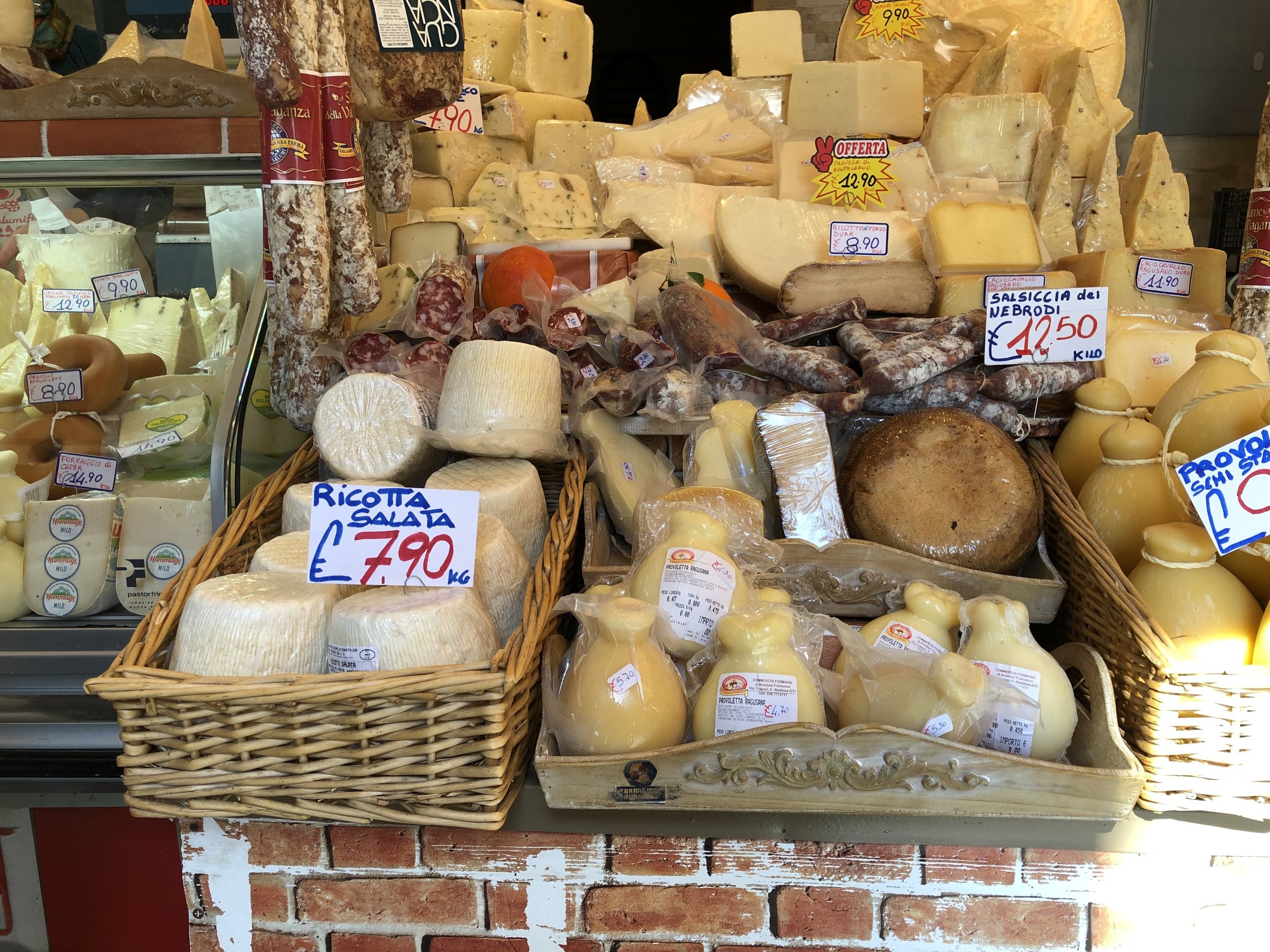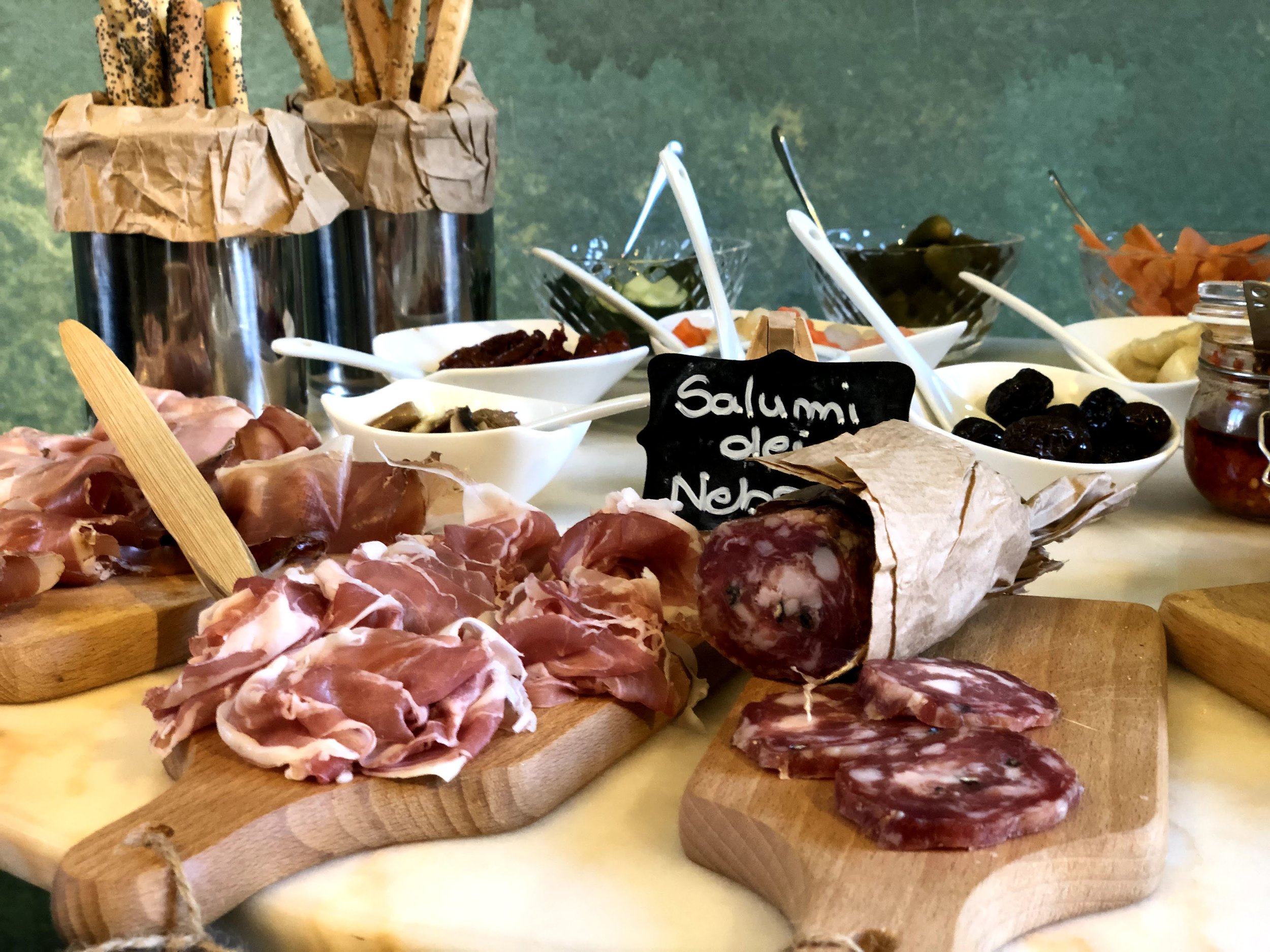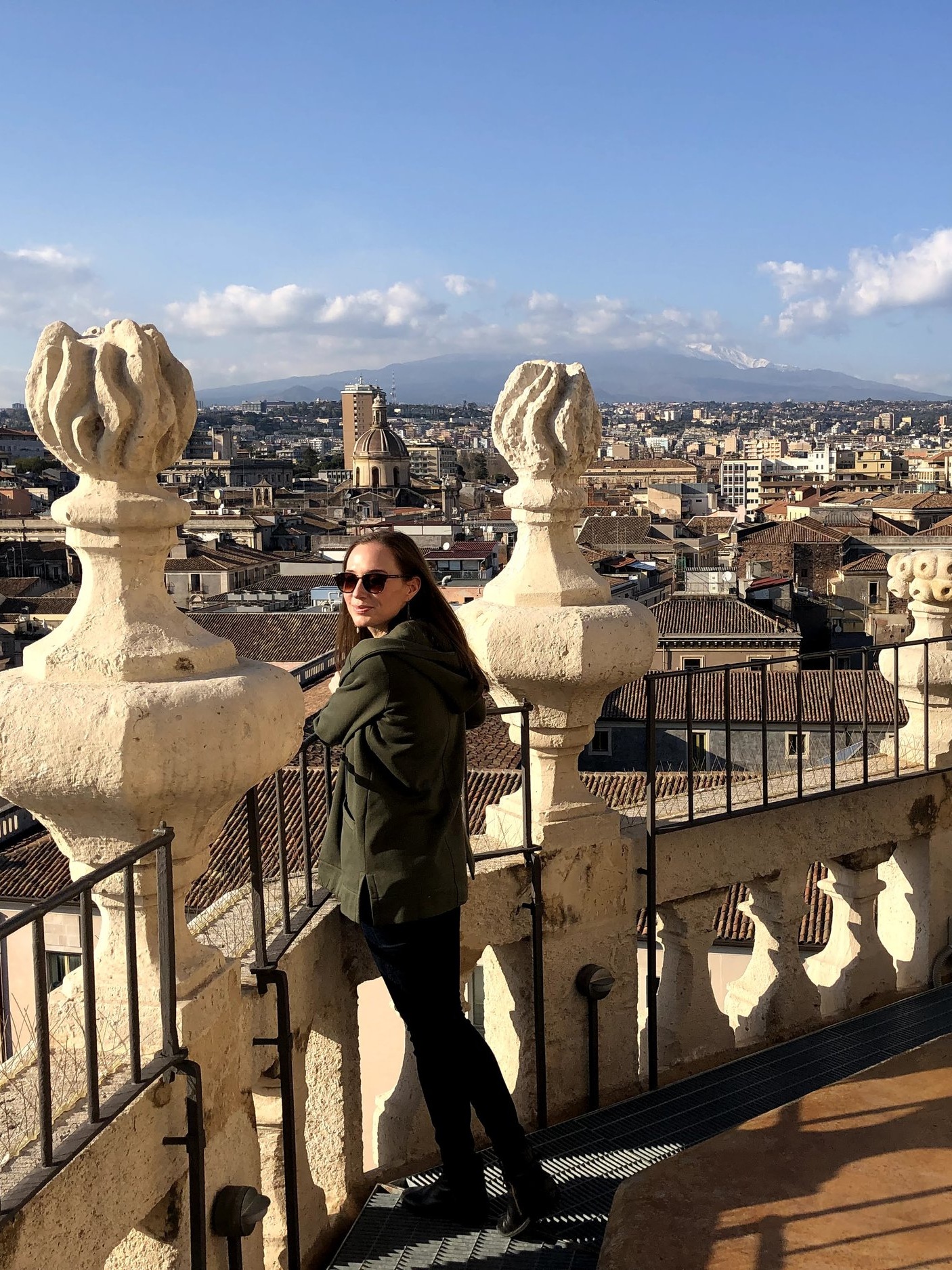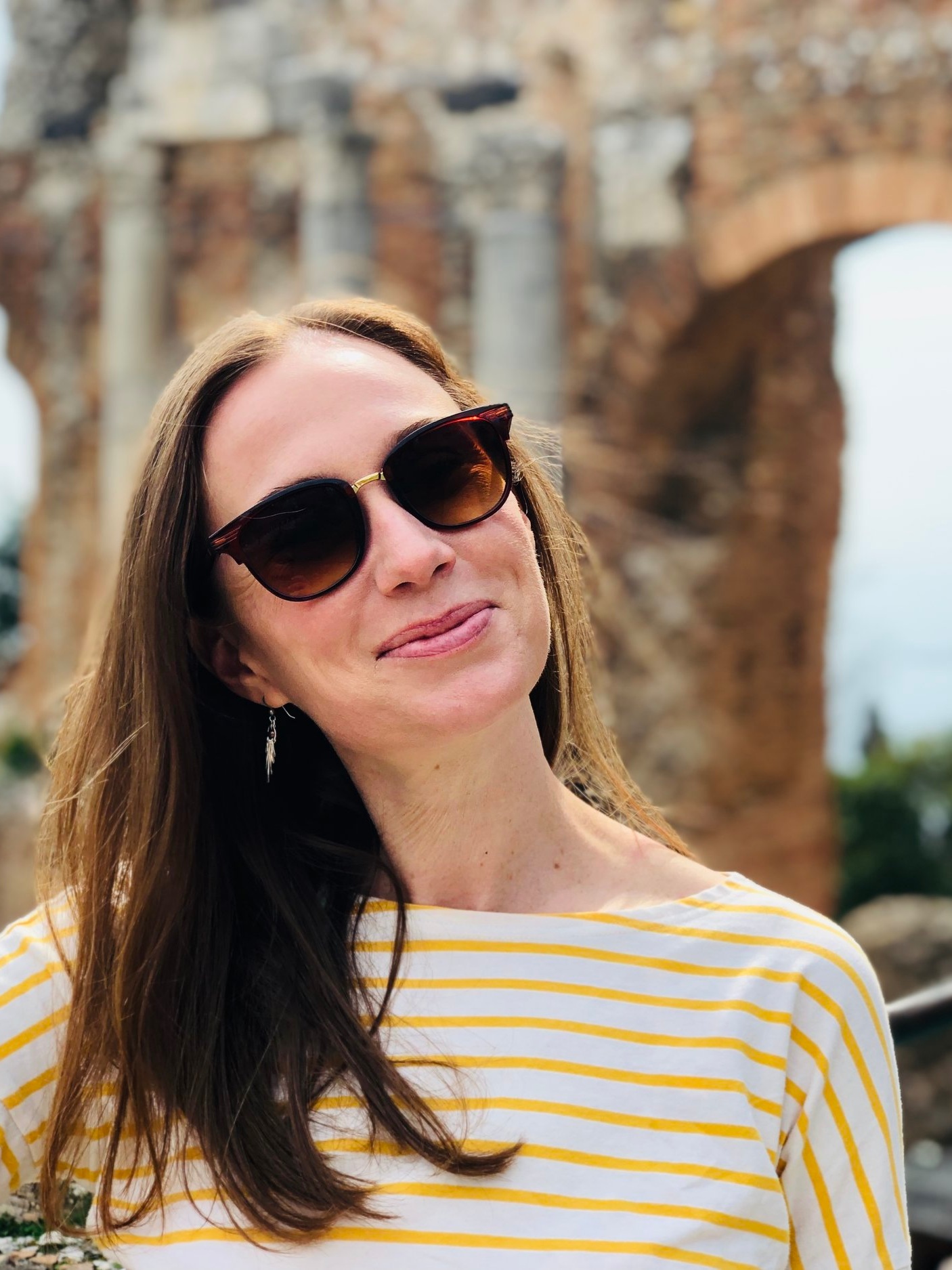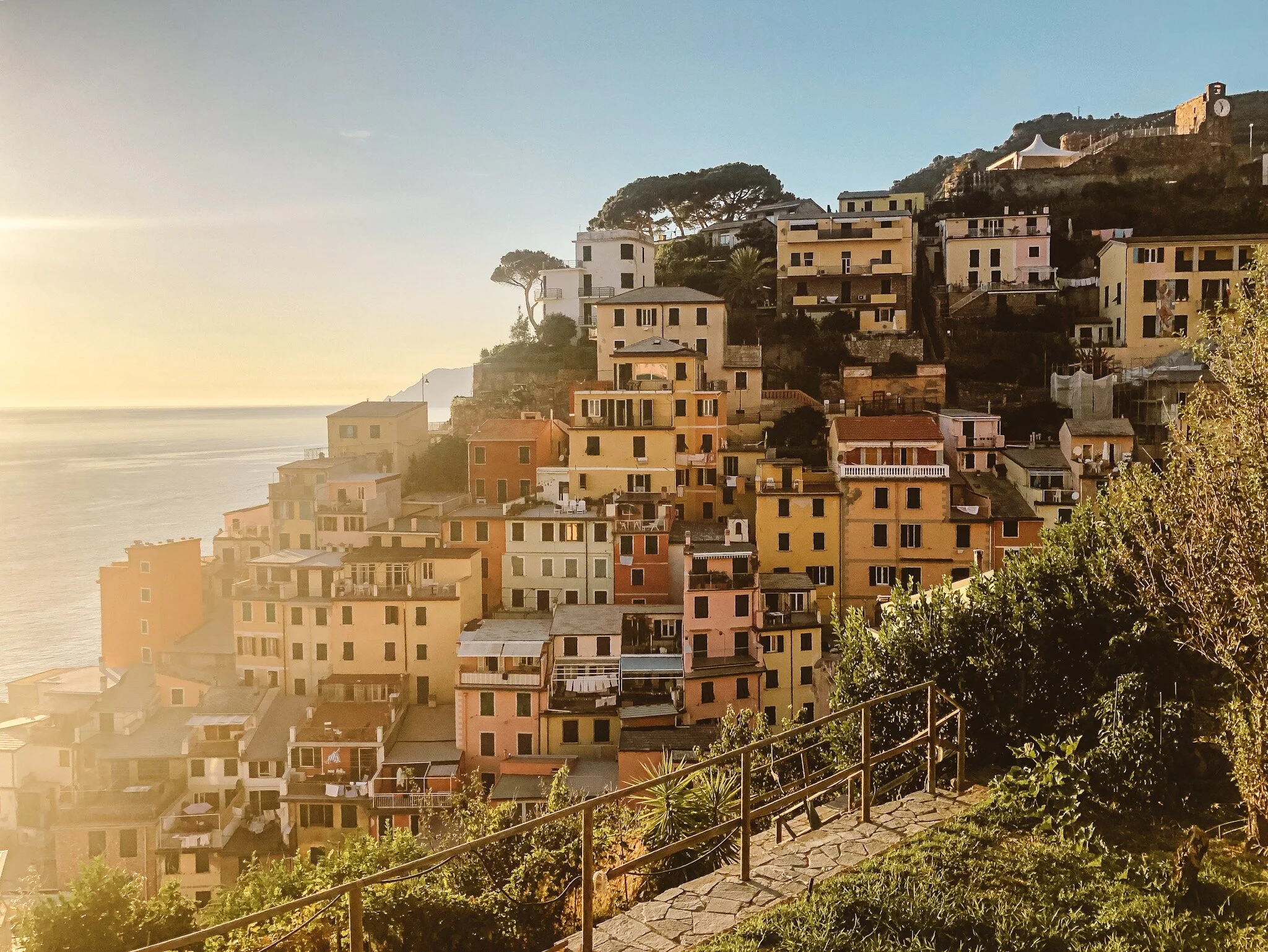Take the Fish, Leave the Cannoli: Sicily, Italy
It’s those unassuming cities that surprise you the most, isn’t it? Our weekend trip to Catania and Taormina caught me completely off-guard, in the best way possible. Sicily had been flying low on my radar, but these two little towns on the rock at the tip of the Italian boot certainly pack a cultural punch.
We booked this trip in the middle of January, during a time when my romanticized vision of winter had finally shattered, and my spirit was breaking under the constant onslaught of cold, dreary days. I needed sunshine. I needed heat, not from radiators, but from the sun. So we found a few free days the first weekend in March and a matching direct flight from Zurich to the city of Catania, on the island of Sicily. Who cares if we had never heard of it? It was in Southern Italy, the flights were cheap, and it looked warm. A winning trifecta.
The Fish Market - A' Piscaria Mercato del Pesce
We stumbled into the market, right off the bus while looking for our hotel. Briny, energetic and full of characters - Catania’s fish market was one of the best I’ve encountered. It centers in the small Piazza Alonzo di Benedetto, but then branches off, snaking through small alleyways, tucked underneath arches, mixed in with the fruit and vegetable stalls, hidden and then found again. The best action, though, is in that main plaza, where the wet cobblestone streets are consumed in a flurry of activity.
It hits all the senses: the shouts of the Sicilian fishmongers, the pungent salty smell of the sea tinged with lemon, the black glassy fish eyes with glistening scales and the squirming live prawns, the rough coolness of mussel shells, the multicolored flags strung above the plaza brightening up the clouds. There were so many fish varieties: tuna, swordfish, cuttlefish, shrimps, oysters, sea snails, silver sea eels looped in a circle, big fish, little fish, many more than this new(ish) pescetarian could identify.
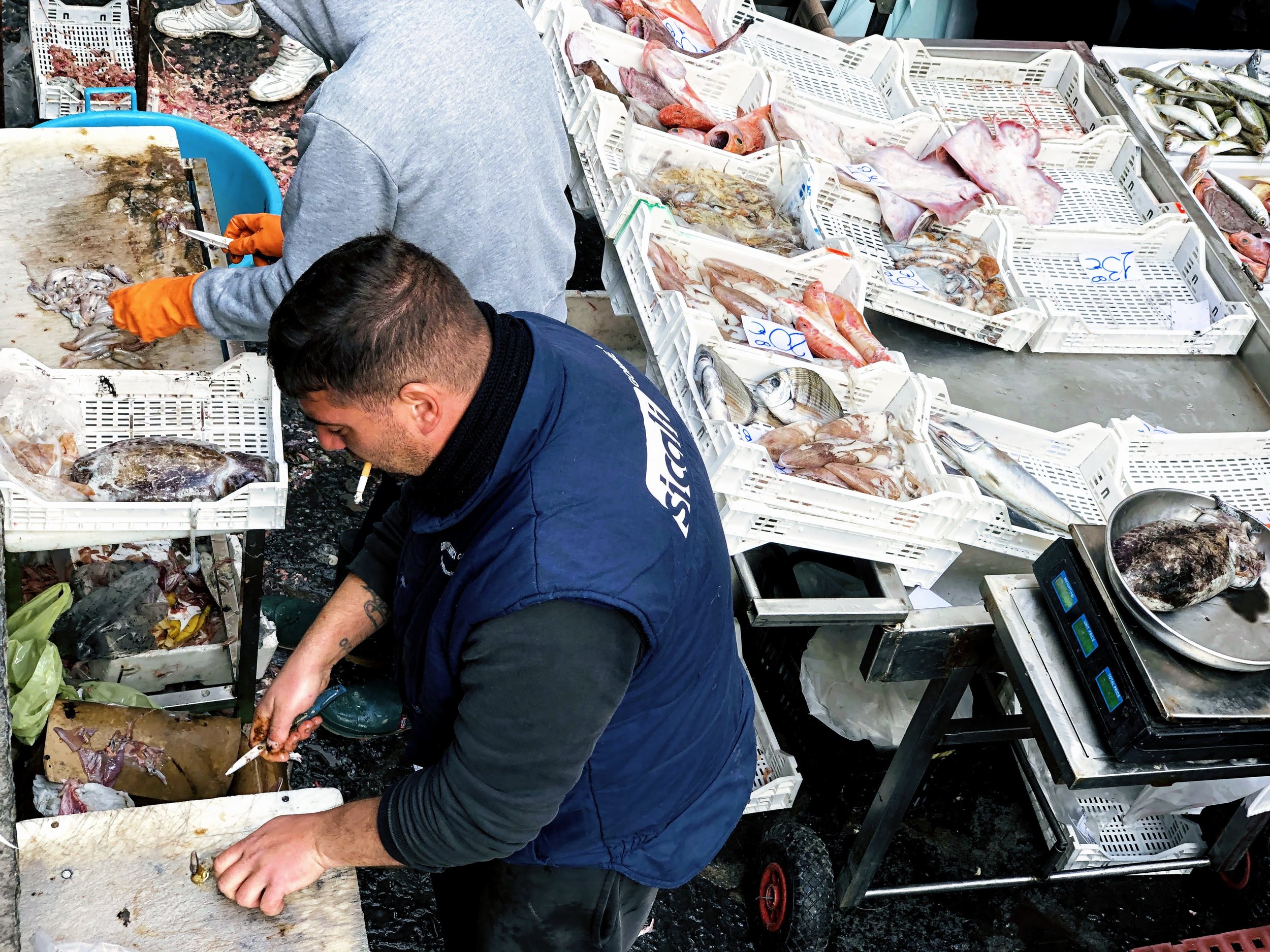

The fish market is a theater, rehearsed since the 19th century, and everyone has a part in the mix. I found a vantage point alongside a row of old men watching the spectacle, as if they were on their own balcony, commenting on the freshness of the day’s catch and every so often reaching down to buy a fish or two themselves. I envisioned they were friends, regulars who stopped by every morning to catch the show and smoke cigars.
And if the market is a stage, then the fishmongers were the main characters. That is what I loved most, watching these fishermen. There were stories etched in their faces, unshaven and weathered and strong. Tales of time at sea. For the most part, those faces looked no-nonsense and intimidating, as they effortlessly deboned and deveined and beheaded with their bare hands or huge machetes, lit cigarettes lazily hanging out the side of their mouths.
But occasionally, they would crack a smile while slapping a fish around, talking with their hands in the ways that Italians do. The Sicilian dialect was much too fast for me to pick up, but when they shouted and laughed to one another, you have to imagine it was something salty, humorous and slightly offensive.
Right on the edge of the market is the Scirocco Sicilian Fish Lab, a little kiosk where all that fresh seafood is fried on a spot. We ordered the “boneless fish” cone and a half-liter of Sicilian white wine, the perfect snack for more people-watching and Godfather-quoting at 11am. Calamari, shrimp, cuttlefish, anchovies and one tiny little octopus hanging on for dear life, lightly battered, freshly fried, spilling out of a paper cone with a fat wedge of lemon. This first taste of Sicily was a good sign of things to come.
Although the name of the market is the “fish market”, it’s also home to some beautiful produce for sale. The island itself is incredibly fertile, thanks to the Mediterranean climate and nutrient-rich volcanic soil, and throughout the market we found the ingredients to some of Sicily’s famous dishes.
Blood-oranges are famous and found everywhere on the island, but the ones with the deepest pigment and sweetest juices are harvested in the fields by Catania. Dark purple eggplants and huge heirloom tomatoes for pasta alla norma, pistachios for Sicilian pesto and cigar-sized cannoli, tangy olives, sweet lemons, ricotta salata, produce so colorful it looked dyed. A verifiable cornucopia. We regretted not having an AirBnB with a kitchen - I wanted to taste it all.
Living Art
But speaking of our hotel - it was wild. Asmundo di Gisira, self-described as an “art market living boutique,” is an art gallery, a boutique hotel, and an experience of it itself. It’s a converted 18th-century noble palazzo smack in the middle of town, unassuming and almost hidden (we could barely find the door since it was partially blocked by a produce stand). It’s unlike any place I’ve ever stayed. Art and design are both creatively used throughout the palazzo, with lots of original pieces by local artists paying homage to Italian classics from the 1930s to 1960s, and each hotel room is themed off a different Sicilian myth.
Our room theme was the myth of “Eliodoro,” the blasphemous magician of Catania. Legend has it Eliodoro entered the town on a mysterious elephant forged from the lava of Etna, and was part dark hero, part enemy of Catholic church. So the hotel room was meant to embody Eliodoro’s enchanted world, with rough ceramic tile all over one wall to represent elephant skin, a wall full of vanity mirrors to represent the illusions and mirages of his witchcraft, and a large disco ball above the bed to represent...well, I’m still not entirely sure. Party time? It was retro and unconventional, but overall a really cool design concept, even if those bathroom mirrors were far from functional.
Breakfast was included, and it was an utterly photogenic spread. Fresh-squeezed blood orange juice and Italian espresso, and a cluster of tables each dedicated to a different food group: breads, cured meats, local cheeses, fruits, pastries and cakes. Best of all, we could eat out on the terrace garden, overlooking the Piazza Giuseppe Mazzini. Is there anything better than watching the hustle of Italian piazzas in the morning?
The one thing the hotel didn’t offer? Sleep. The walls were thin and the floors concrete, meaning we could hear everything happening outside our door and on the floor above, and it was Carnevale, so no one was sleeping but us. At one point in middle of the night, I was woken up by footsteps above us, so loud I was certain people must be walking around inside our room. Remembering that our room’s theme was a representation of the evil magician Helidorus didn’t help. Spooky.
Exploring Catania
The whole town of Catania feels old and weathered, in the way that ancient seaside towns can be. Decades of salty air has peeled paint and crumbled stone, that strong Mediterranean sun fading once brilliant primary colors to softer pastels. Uneven cobblestone streets give way to piazzas. Wrought-iron balconies bulge with hanging plants, flowers and succulents, many of them in brightly painted ceramic pots in the shape of head busts. In between balconies, laundry lines flutter with the weekend’s wash.


As with any Italian city, there are plenty of the churches, the most famous being the Cattedrale di Sant'Agata, which sits in the Piazza Duomo facing the Elephant Fountain. But for spectacular views of the city and smoking Mount Etna, go across the street to the Bascilia where for a couple Euro, you can climb to the top of the rotunda.
“You came to eat,” was how the hotel conciergerie greeted us after we had dropped off our luggage Saturday morning. Is it that obvious? But yes, we came to eat. After exploring the market and eating a fried fish snack to prevent the hanger, Raunaq and I walked through the center of town and into a residential neighborhood, seeking the Sicilian classic pasta alla norma and finding Al Tortellino.
Go here for an authentic, “fast food,” typical Italian pasta experience. You’ll take a number, try to remember your college Italian really fast before they call you, and order (aka point to) the pasta dish you want. It’s all premade, so they just warm it up and bring it to your table. Don’t let this dissuade you. This stuff is damn good, and at only 3 euro a plate, a damn good deal, too. Chucks of fried eggplant in a tomato sauce tossed with casarecce, a pasta that looks like it has rolled up into itself. I don’t think I’ve ever had shaved ricotta salata before, and now I can’t imagine my life without it. Cheap, easy, delicious.


I don’t have a sweet tooth, but I will never not eat gelato. Nocciola gelato, specifically. I love how much Italians love their gelato. Children, old little grannies, businessmen in Ermenegildo Zegna suits, nuns, teenage couples on scooters - gelato is the thing that brings them all together. We went to Savia, which is actually a pasticceria serving arancini and cannolis that happens to also sell gelato. Just five or six flavors, only the classics, with the traditional two scoops swiped into a wafer cone. Best enjoyed in the park across the street.
The wine flows like water, so it made sense to stop for a few glasses before our 9pm dinner reservation. I tried to make it as late as possible to feel like a cool Italian, but I’m an old woman at heart and 9pm is about as late as I can go. First drinks at BarnAut, a tiny hole in the wall vintage bar that spills out onto the street with oak dining room tables, and then at Gammazita, an open-air library bar. We sat outside with our glasses of Nero d'Avola and watched a group of friends get pizza delivered by a guy on a Vespa. The next night, this whole place turned into a giant street party for Carnevale. Italy, Italy, you are my very favorite.
And a dinner neither of us will forget. The descriptions of pasta on the menu at Trattoria da Antonio may sound a bit basic- orecchiette with seafood and pumpkin soup, pappardelle baked in foil - but the executions are anything but ordinary. We ordered the above, on the recommendation of our waiter, and all but licked our plates clean. Seriously delicious.
One last thing: Raunaq ate cured donkey meat. I’m not sure what else there is to say about that - except that sometimes, he can be an ass (ba dum chhh).
Exploring Taormina
Taormina, a small hilltop town on the east coast, is about an hour away from Catania. Once a thriving Greek, then Roman, town, now it’s a posh Sicilian seaside destination - but since we were there in the offseason, it wasn’t crowded at all. Taormina reminded me a bit of Cinque Terre, with colorful homes spilling down the rocky green cliffs and tiny coves of turquoise water.


Ernest Hemingway once said Taormina is "so pretty it hurts to look.” The town makes an appearance in his short story The Mercenaries, where the main character describes life “under the orange trees, jasmine matted on the walls, and the moon making all the shadows blue-black”. And I completely missed this, but apparently the G7 summit was held here in 2017.
A highlight for me was seeing the ancient Greek Theater, where some of the island’s layered history is revealed in the ruins. The theater was first built by the Greeks in the third century BC, then expanded by the Romans for gladiator battles and arena games , and still used by the Sicilians today for operas and concerts. For some reason it was a free entrance day, but it would have definitely been worth the 10 euro fee to explore. I became oddly emotional watching a short video, which reimagined what the theater would have looked like in its height of glory thousands of years ago. “How spectacular this must have been.” Maybe it was the dramatic setting, or low blood sugar, but the history felt alive.
Then there is Isola Bella, the pearl of the Ionian Sea. We took the creaky cable car that ferries beachgoers up and down the hillside to get to the beach, just as the sun slipped behind the clouds and a few rain clouds appeared. The water was still astoundingly clear and blue, more navy than turquoise now, but you could imagine what the color would be in the peak of summer.
The island itself was once a private residence, but is now a natural reserve. When the tide is low enough, there is a little path that connects the island with the rest of the beach. It is surrounded by little rocky grottos and caves, and again, since it was free entrance day, we were able to explore it for free. I could certainly imagine worse places to live. After, Raunaq and I sat on the pebbly beach with a bottle of red. It was chilly, but the rain surprisingly kept at bay, and we sat at Isola Bella until our evening bus back to Catania.
Sicily catches you. It reminded me so much of Central America, of León and Antigua, in the looming volcano and the cobblestone and faded Baroque buildings and bus timetables that are simply suggestions. For Raunaq, it was similarities to Old Bombay, a Bombay from twenty years ago. And maybe it’s because Sicily was at the crossroads of so many cultures - Phoenicans, Greeks, Arabs, French, Romans, Normans - that we could each feel such strong memories connecting it to different places.
Or maybe it’s because travel is just something deeply personal, and we each have a unique patchwork - of experiences, people, scents, feelings, tastes, sounds, our old selves - from each place etched in our minds. And sometimes, not often, but sometimes, there is something in a new place that triggers an old memory. But whatever the reason, we each found in Catania, and in Sicily, something both new and familiar.
Travel Tips
Ladies, don’t expect to find toilet seats in most of the bathrooms in Catania. Do a few squats before the trip so your legs are sufficiently prepared to…hover.
Alibus has a “regular” bus to and from the airport to the Catania city center (approx 30 minutes). “Regular” is in quotations, because although the timetable says it runs every twenty minutes, there didn’t seem to be much rhyme or reason to when it arrived and departed. Welcome to Italy! You buy tickets when you board from the driver.
Interbus runs a service from Catania - Taormina (approx 1:15 hrs). Make sure to check the bus schedule online. You buy tickets from the Interbus office about a block away from the bus terminal in Catania.
One thing we didn’t do, because of timing and weather, was hiking around Mount Etna. If you are going in late spring, summer, or fall, this is definitely seems worth it to check out!
Consider staying in a place with a kitchen! The produce from the market all looked spectacular.




